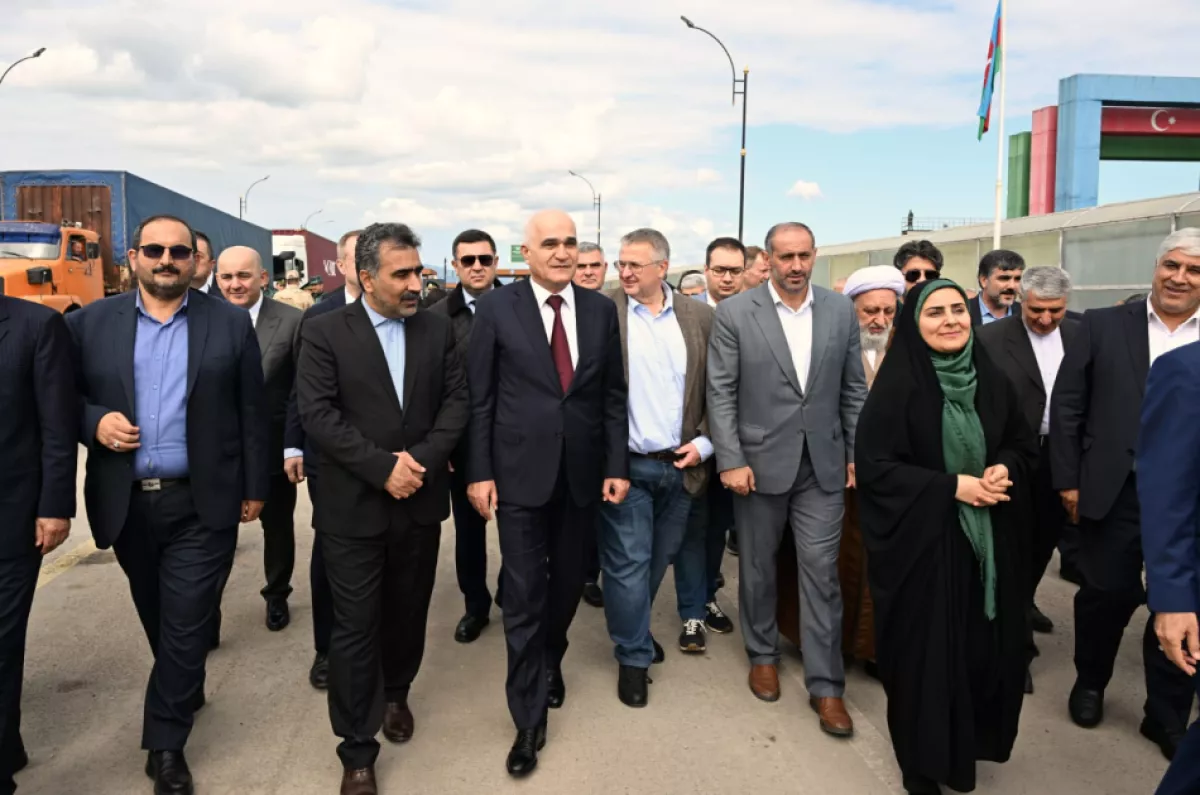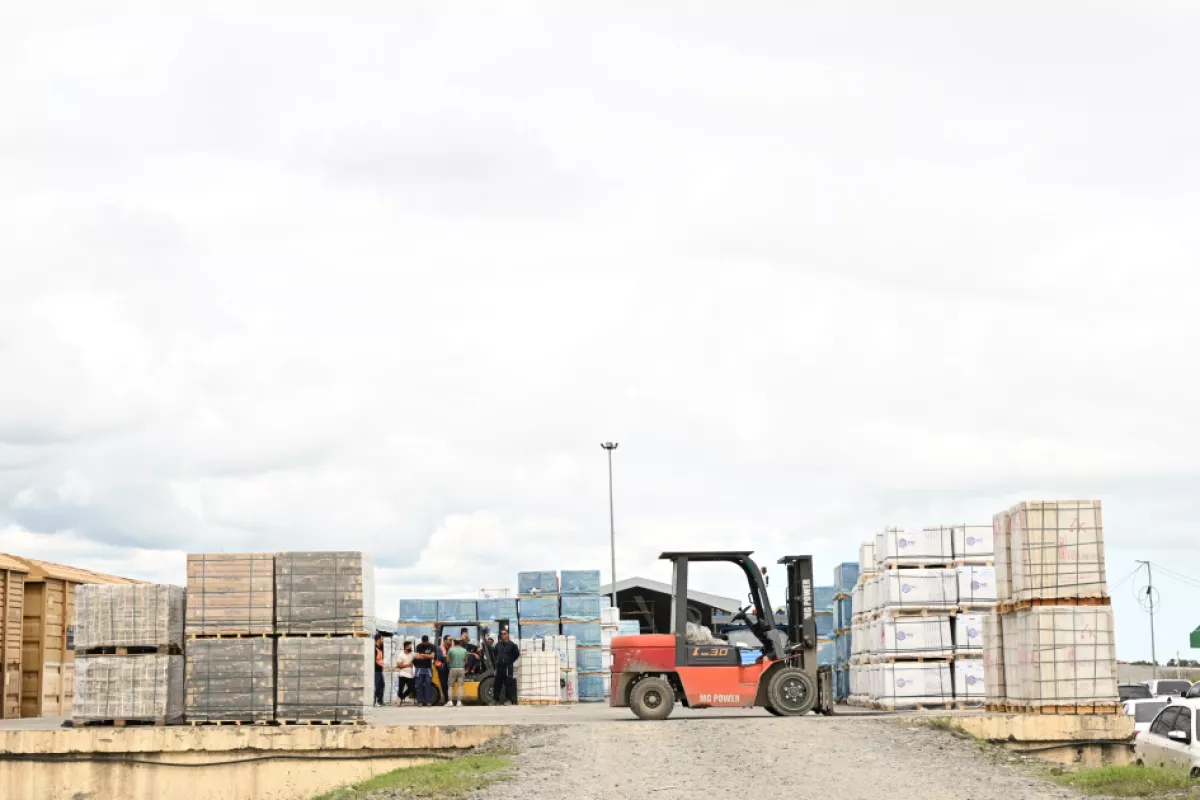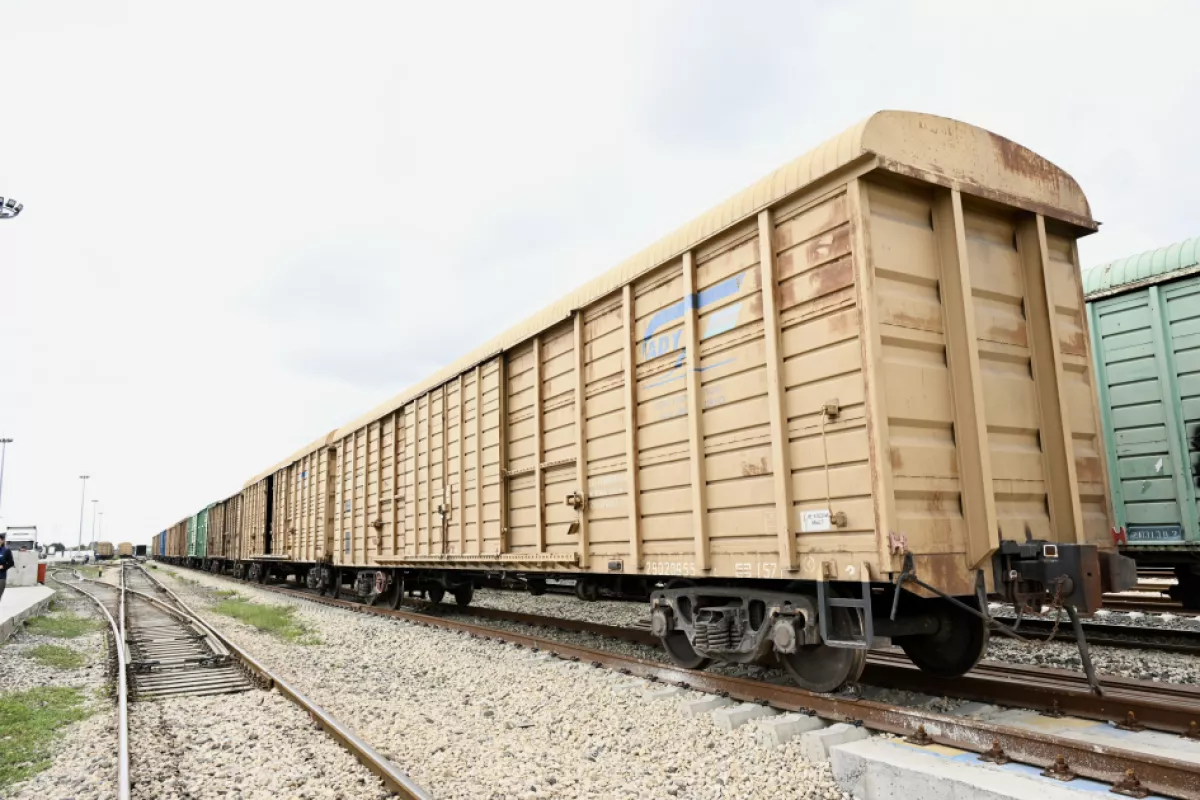Azerbaijan emerges as regional transit hub From railways to power lines
Azerbaijan’s position as a regional transit hub is gaining momentum. The gradual normalization of Azerbaijan-Russia relations, following the recent CIS Heads of State Council meeting in Dushanbe, combined with renewed economic engagement with Iran, has opened new prospects for trilateral trade and economic cooperation. This progress is further reinforced by reciprocal visits of senior officials, which help advance capital-intensive transport, energy, and other joint projects. The latest development came on Monday in Baku, where representatives from the governments of Azerbaijan, Russia, and Iran met in a trilateral session and concluded with the adoption of a joint communiqué.
Launched on the initiative of the President of Azerbaijan, the regional consultative mechanism “3+3” has recently gained significant relevance, with the expansion of business cooperation seen as its most in-demand aspect. This is evidenced by the outcomes of the meeting in Baku between Azerbaijan’s Deputy Prime Minister Shahin Mustafayev, Russia’s Deputy Prime Minister Alexey Overchuk, and Iran’s Minister of Roads and Urban Development Farzaneh Sadegh.
“Azerbaijan is committed to the principles of good-neighbourliness, mutual understanding, and equal partnership in its relations with both the Islamic Republic of Iran and the Russian Federation,” Deputy Prime Minister Shahin Mustafayev stated during the trilateral meeting. “From this perspective, the consultative mechanism ‘3+3’ is becoming increasingly relevant. This initiative complements existing bilateral and other forms of cooperation, strengthens regional security and stability, and creates new opportunities to expand trade, economic, transport, and energy ties between our countries.”

Aspects of the further development of the international transport corridor (ITC) “North–South” became a key topic of the trilateral talks in Baku. The meeting also featured extensive discussions on current issues of trilateral cooperation in the fields of transport and power generation, as well as an emphasis on the importance of synchronised improvement of the logistics infrastructure along the ITC corridor, and the digitalisation of customs and border-crossing operations. In particular, Iran’s Minister of Roads and Urban Development, Farzaneh Sadegh, proposed the full digitalisation of documentation for freight transport and logistics along the “North–South” corridor to ensure smoother cargo transit across all three countries, increase throughput capacity, and prevent delays along the ITC.
In the past, a number of important documents were signed within the trilateral format to develop the “North–South” route, including an intergovernmental agreement between Azerbaijan and Russia on cooperation in developing transit freight transportation along this corridor. Notably, on 17 May 2023, the heads of the transport ministries of Russia and Iran signed an agreement on the joint financing, design, and construction of the 170-kilometre Rasht–Astara railway section. In Iran, land allocation works have already been completed, and preparations for laying the Rasht–Astara railway section are underway, with construction expected to be completed around 2028–2029.
Meanwhile, on Azerbaijani territory, bottlenecks along the continuous ITC route have been under expansion since 2018. The JSC “Azerbaijan Railways” (ADY) has laid tracks from the border town of Astara directly to the state border, constructed a railway bridge, and put new terminals and border checkpoints into operation. Among these projects, the largest grain terminal in the region, Astara Grain Terminal, with an annual capacity of 500,000 tonnes, was built. ADY has also initiated the construction of a universal terminal in Iran, “Astara,” whose capacity will soon increase to 4 million tonnes per year. According to recent ADY reports, 80% of the construction and installation work at the “Astara” terminal has been completed, one bridge has been commissioned, and the construction of five additional bridges is nearing completion.
“Azerbaijan, Russia, and Iran are working together to increase the throughput capacity of border road checkpoints. At the end of last year, an intergovernmental agreement was signed with the Azerbaijani side on cooperation to develop transit transport along the ‘North–South’ corridor, the main goal of which is to ensure a stable flow of cargo,” noted Russia’s Deputy Prime Minister Alexey Overchuk during the meeting. “With the Iranian side, the 2023 agreement on the construction of the Rasht–Astara railway section is being implemented: satellite measurements are underway, levelling work is in progress, and results are being processed. Additionally, within the framework of the ITC’s Western route, the railway authorities of the three countries are refining technologies for multimodal container services.”

All of this work is already yielding tangible results. According to figures presented during the meeting, cargo volumes along the ITC increased by 8.3% over the first three quarters of 2025, with road transport accounting for 10.4% of this growth and rail transport for 2%. In particular, Alexey Overchuk noted that in the first half of the year, cargo turnover between Russia and Azerbaijan rose by 13%, reaching 6.8 million tonnes. “Regarding the road checkpoints on the Russia–Azerbaijan state border, we have taken measures that allowed us to increase their throughput fivefold — from 400 to 1,900 trucks per day.”
The Russian Deputy Prime Minister also noted that after the reconstruction of the Novo-Filya, Tagirkent–Kazmalyar, and Yarag–Kazmalyar road checkpoints, the total capacity for freight transport on the Russian side will reach 3,000 vehicles per day.
“In December 2024, Azerbaijan and Russia signed an Agreement on Cooperation in the Development of Transit Freight Transport along the ‘North–South’ corridor, under which the guaranteed volume of cargo to be transported annually through our country, following the modernisation of the relevant railway infrastructure, will be set at no less than 5 million tonnes per year starting in 2028. After the adoption of the corresponding decision by both parties, this volume will reach at least 15 million tonnes,” stated Azerbaijani Deputy Prime Minister Shahin Mustafayev.

To achieve these targets, work on developing transport and logistics infrastructure has been accelerated. By the end of this year, the construction of the Aghband–Kalala road bridge over the Aras River will be completed, with the necessary border and customs infrastructure at this site ready by the first quarter of next year. Meanwhile, on the Iranian side, construction continues on the 107-kilometre high-capacity Julfa–Kalala highway, which will link the Islamic Republic of Iran with the Nakhchivan Autonomous Republic (NAR). Initiated by the governments of Azerbaijan and Iran under the March 2022 agreement, these projects form an important component of the Aras Corridor, which also plans to complete the construction of the Horadiz–Aghband road and railway next year.
Alongside transport cooperation, the development of an energy bridge between Russia, Azerbaijan, and Iran is seen as equally promising, enabling the synchronisation of the three countries’ power grids, establishing a stable energy exchange, and exporting surplus electricity to third countries.
“The energy sector holds significant promise in the context of trilateral cooperation. Currently, there are existing connections between the power grids of Azerbaijan, Iran, and Russia, which enable electricity exchange and trade,” Deputy Prime Minister Shahin Mustafayev noted during the trilateral meeting. “A key agenda item in our cooperation in this area is the coordinated integration of our countries’ power grids in a trilateral format.”
In this regard, Azerbaijan, acting not only as an electricity supplier but also as a transit country, has made considerable efforts to strengthen the energy infrastructure of the Azerbaijan–Russia–Iran energy bridge. Azerbaijan’s and Russia’s power systems have been interconnected since Soviet times via two transmission lines — the 330 kV “Derbend” line and the 110 kV “Yalama” line — and the two countries have agreed to construct a third parallel high-voltage transmission line. This involves the 330 kV Absheron–Yashma–Derbend line, whose commissioning is particularly important for transit purposes. In recent years, equipment along the entire route from the Russian border has been modernised, including the reconstructed 330/220/110/10 kV Yashma hub substation, which was opened in February 2022 and is equipped with a shunt reactor.
In the new century, the corresponding transmission infrastructure between Azerbaijan and Iran has also been significantly expanded through the efforts of OJSC “Azerenerji” and its Iranian partners. In particular, substations were constructed and high-voltage transmission lines were laid in the border zone. Today, electricity exchange between the two countries is carried out via five high-voltage lines: “Parsabad I,” “Parsabad II,” “Astara” (132 kV), as well as the 132 kV lines “Julfa” and “Aras” through the Nakhchivan Autonomous Republic and the adjacent Julfa district in Iran.
Recently, works on a new 220 kV transmission line “Masalli–Astara (Iran),” stretching 68 kilometres, were completed. Overall, the capacity of the Azerbaijan–Iran transmission system has reached approximately 800 MW, and this potential can be fully utilised in the near future following the full implementation of the energy bridge project linking Moscow, Baku, and Tehran.








